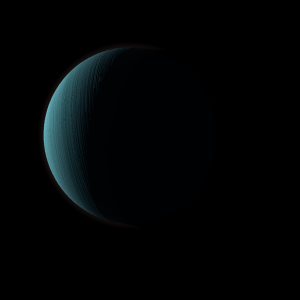|
|
Space Astro
|
Info for exoplanet "Kumi"
| Scientific (actual) data |
|---|
| Name | TOI-4641 b |
| Planet status | Confirmed |
| Planet mass | 3.87 |
| Radius | 0.73 |
| Orbital period | 22.0934 |
| Semi major axis | 0.173 |
| Orbit eccentricity | 0.074 |
| Inclination | 87.9 |
| Discovered | 2023 |
| Updated | 2023-12-08 |
| Tzero tr | 2459510 |
| Lambda angle | 1.4 |
| Impact parameter | 0.78 |
| Publication | Published in a refereed paper |
| Detection type | Primary Transit |
| Mass measurement type | Radial Velocity |
| Radius measurement type | Primary Transit |
| Star name | TOI-4641 |
| Right ascension | 42.56° |
| Declination | 25.33° |
| Mag v | 7.5 |
| Star distance | 87.6 |
| Star metallicity | -0.09 |
| Star mass | 1.42 |
| Star radius | 1.72 |
| Star age | 2.69 |
| Star temperature | 6500 |
| Wikipedia article | TOI-4641 b |
Back
| |
| Fictional info (?) |
|---|
| Suggested name | Kumi |
| Planet type | Large gas giant |
| It is a large gas giant planet with a mass one-thousandth that of TOI-4641, but two-and-a-half times that of all the other planets in its solar system combined. It is the coldest planetary atmosphere in its solar system, with a minimum temperature of 63°K (-210°C), and has a complex, layered cloud structure with ammonium hydrosulfide (NH4SH) thought to make up the lowest clouds, and molecular hydrogen the uppermost layer of clouds.
The argon has probably photodissociated, and the free molecular hydrogen has been swept into interplanetary space by the solar wind because of the lack of a planetary magnetic field. |
| Atmosphere | Molecular hydrogen | 37% |
| Ammonium hydrosulfide (NH4SH) | 31% |
| Argon | 15% |
| Ethane | 14% |
| Nitric oxide | 1.6% |
| Helium | 1.2% |
| Water vapor | 0.32% |
| Ammonia | 0.0043% |
| Atmospheric pressure | 25 bar |
 |
| No known satellites |
| Google search for Kumi |
|
Website by Joachim Michaelis
|
|
|
|